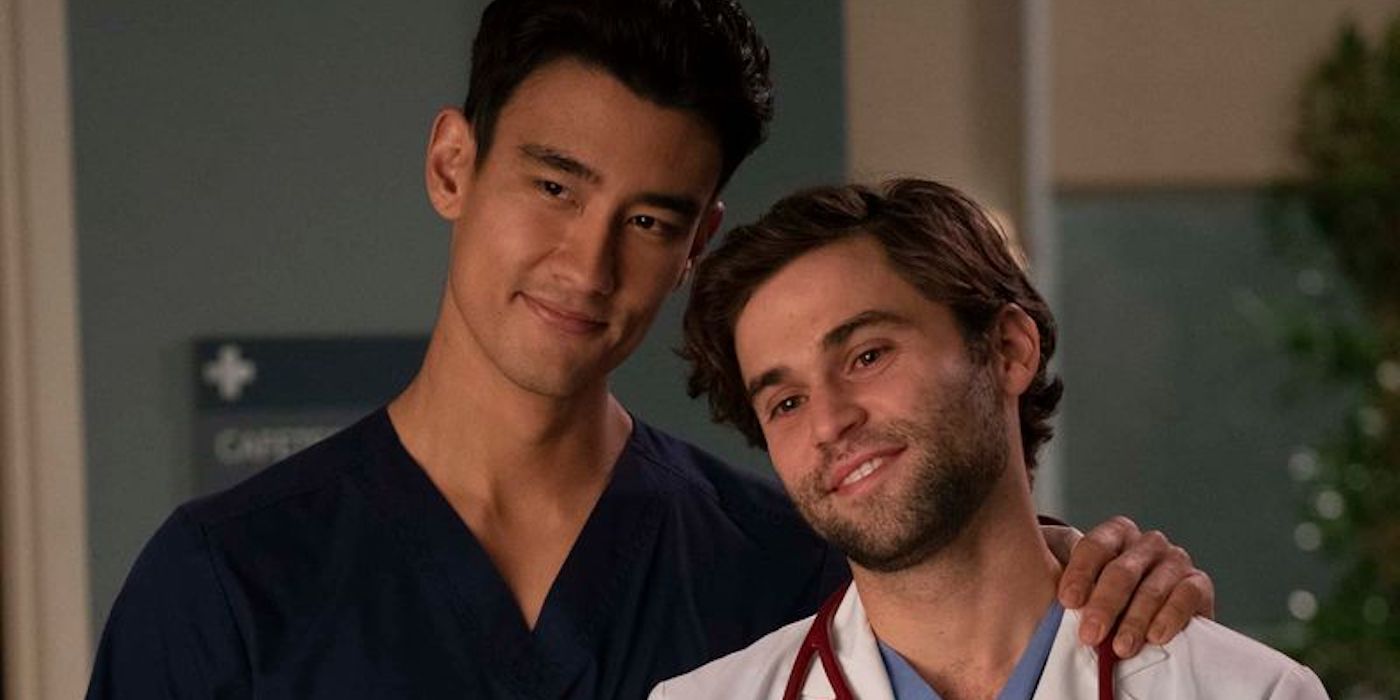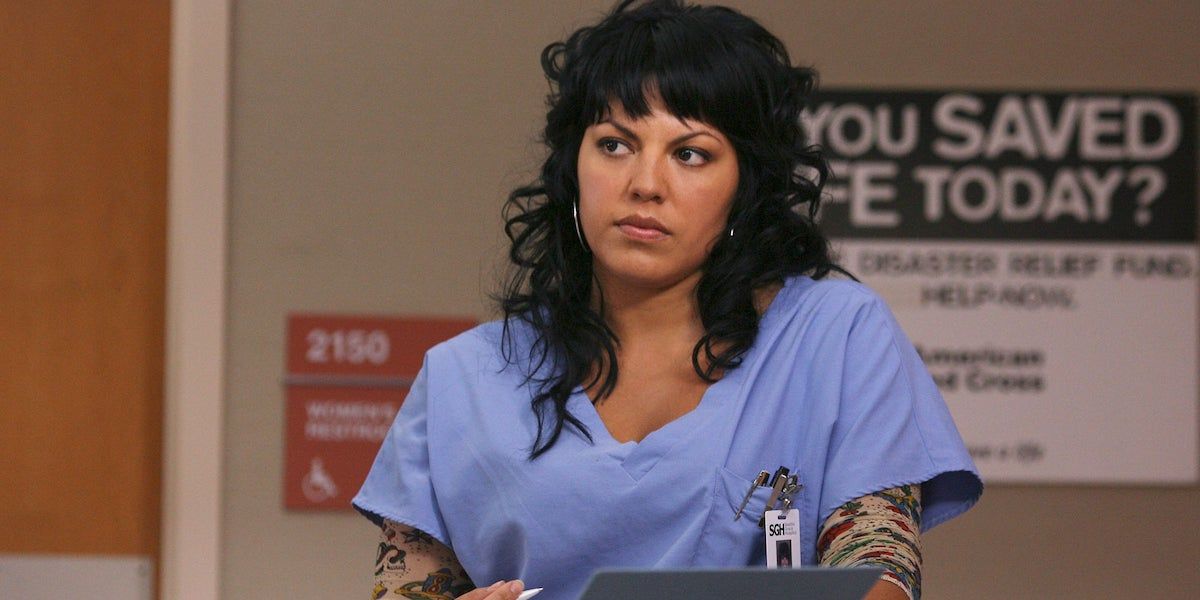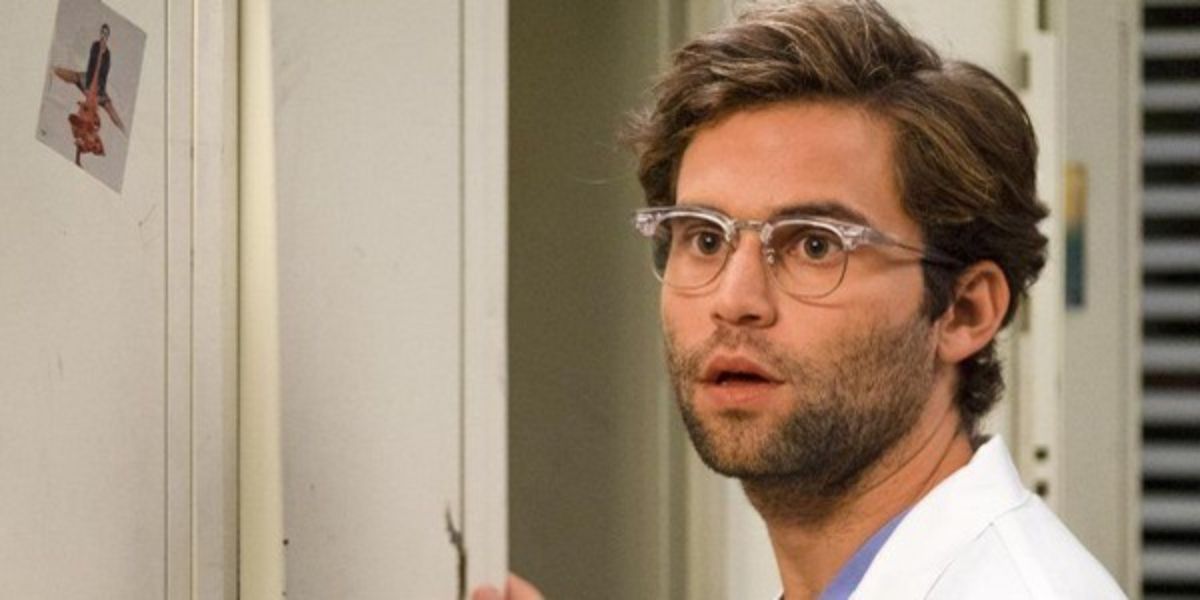When I was 13, I used to love looking up opening credits from old TV shows on YouTube. Growing up during the height of TV on DVD, I loved nothing more than basking in the pop culture of decades past, which soon became an escape from a reality where the rest of the world was suddenly telling me who I was before I could decide for myself (read: gay). Looking up old opening credits soon transformed into looking up scenes of gay couples from mid-aughts television, including but not limited to Kevin and Scotty from Brothers & Sisters and Luke and Noah from As the World Turns. It didn’t matter that I knew nothing about the context of the series themselves at the time, all I cared about was watching gay men exist. I didn’t yet have the dexterity or emotional bandwidth to declare that I was queer, but knowing footage of them at least lived was monumental for me.
I was recently brought back to my preteen-YouTubing self when I reached Season 15 of Grey’s Anatomy for the first time, when at long last Levi Schmitt (Jake Borelli) and Nico Kim (Alex Landi) become the series’ first prominent gay male couple. I screamed and squealed at the screen like a preteen in fact would as the characters kissed in the elevator, got it on in the ambulance, and Schmitt’s coming-out to his colleagues in the OR. Afflicted with the chronic condition of falling in love with fictional characters more so than real people, I of course began reliving all these scenes on YouTube and was reminded of when these kind of Internet searches were my lifeline and connection to a wider world I didn’t yet grasp. But as I scrolled through the comments on most of these videos, a trend began to emerge: “Why couldn’t they have done this storyline with George?”
To have lived long enough to witness Grey’s Anatomy’s neverending network run is to have witnessed the infamous controversy surrounding the actors of loveable klutz George O’Malley and stern cardio surgeon Preston Burke, T.R. Knight and Isaiah Washington respectively. The story goes that, during production of the series’ third season, Washington referred to Knight by a homophobic slur during an altercation with Patrick Dempsey, with Knight not even present at the time. Washington was eventually released from the series following his increasingly problematic public behavior and Knight, who would leave Grey’s three years later, cited his decision to live openly as gay as part of his decision in departing. Plus, according to Lynette Rice’s How to Save a Life: The Inside Story of Grey’s Anatomy, there was talk of writing George’s character as gay before Knight was even cast, but the idea was later squashed.
Grey's Anatomy Has Featured Many Female LGBTQ+ Characters
But that’s not to say that Grey’s Anatomy wasn’t largely lauded for its portrayal of LGBTQ+ characters in the years to come. Far from it, in fact: Callie Torres (Sara Ramirez) would become the longest-running LGBT character on American primetime television, with the character’s own storylines surrounding embracing her bisexuality as a Latina receiving even further praise and attention. It laid the groundwork for further queer female characters to be introduced, anywhere from Arizona Robbins (Jessica Capshaw), to Leah Murphy (Tessa Ferrer), to Penny Blake (Samantha Sloyan), to Taryn Helm (Jaicy Elliot). It can’t be emphasized enough: Grey’s has more than covered its fair share of representation for queer women. So why did it take until Season 15 for us to see two guys get busy in an on-call room?
Why the series chose not to go there with George’s character is neither here nor there, considering queer representation on TV was in a very different place in 2005. But there’s surely something to be said for the ways in which queer men compared to queer women test on network television. According to a 2020 study, lesbian women are more likely to be accepted in society compared to gay men. Out of 23 countries profiled including the United States, the study found that “gay men are disliked more than lesbian[s]” in every single one. According to its report, the Western world is quite preoccupied with “harboring prejudicial attitudes toward sexual minorities” which typically includes the “social construction of what it means to ‘be a man.’”
This, of course, should be nothing knew to anybody: in the face of providing legitimate representation for legitimate queer women onscreen, it can still often boil down to, “What will upset which demographic the least?” And because queer women are so often fetishized by heterosexual men, there’s no doubt that studies like these provide concrete evidence behind the question of why network TV is more apt to go there with lesbians rather than gay men. It comes down to a simple philosophical understanding of the ways in which femininity and masculinity are held in Western society and culture. And said understanding is in fact quite simple: masculinity is valued more than femininity. After all, it wasn’t female homosexuality that was historically policed—the law didn’t seem to care what lesbians were doing.
Why Schmitt's Coming Out Storyline Was Vital
Which is what makes Schmitt’s coming out storyline all the more vital. So often mainstream queer representation is made from the perspective of a gay man who could easily be mistaken for straight, he just happens to be gay. For all the ground that was broken by Connor Walsh’s (Jack Falahee) sluttiness on the fellow Shondaland drama How to Get Away with Murder, it didn’t exactly tell us anything we didn’t already know. Schmitt, however, is a nerd, and wastes no time justifying to his new crush that he doesn’t need to have a shame spiral because he isn’t any more ashamed of being gay than anything else in his life. “You kissed me, and I felt the opposite of shame,” he tells Nico. “I felt like I existed, and everything fell into place.” In a world that’s seen enough queer stories focus on the pain of self-hatred, Schmitt’s declaration of his existence—something I felt watching YouTube compilations back in 2010—is exactly what everyone needed to hear.
It’s also evident that Grey’s Anatomy wanted to sincerely develop Schmitt and Nico’s storyline afterwards, and specifically Schmitt’s coming out journey. Deciding to lose his signature glasses after a surge of personal and professional confidence, his superiors soon take notice. “You seem different,” Meredith (Ellen Pompeo) tells him during surgery. Jo (Camilla Luddington) concurs. He’s less “Glasses,” no longer the klutzy intern making blunders across the board. “I met someone, and he’s hot and confident and he likes me,” Schmitt pronounces after a beat. “And I’m gay. And he’s gay. And we’re gay together. And it’s the most me I’ve ever felt in my whole life.” Amen.
It would have been nice, on some level, in another life, to see the klutzy intern that George O’Malley once was perhaps become the more confident, assertive doctor that Schmitt becomes by exploring his sexuality. But although that’s not how his story was written (he got hit by a bus instead—pass the damn tissues), Grey’s fans just had to hold on for (checks notes) 10 more seasons until the writers and producers gave viewers the other kind of queer representation it was lacking. The takeaway is not that one type of queer representation is superior to another, but that as many bases need to be covered as possible for the most inclusive experience. And similar to other themes, Grey’s Anatomy is still ahead of everyone else.



